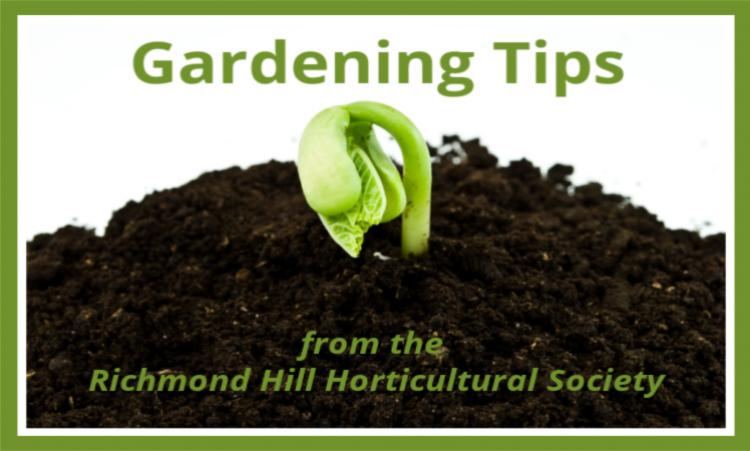Article by Doreen Coyne, a member of the Richmond Hill Garden & Horticultural Society.
For the last several years I have found that its been getting cooler by mid to late August. But even if this year doesn’t follow that pattern, cooler weather will be coming soon. So it’s time to get outside and prepare your garden for our upcoming Canadian winter. As you prep each month, you’ll have fond memories of the past summer and beauty, colour, and food your garden provided to you during this growing season.
There are a lot of little tasks that need to be completed to get your garden ready for winter. Online there are lots of sites that provide to-do lists. I’ve taken several of these and put them together to form a month by month set of tasks that will benefit your garden and lawns. Fall is the time to plant trees and shrubs, cut back perennials, remove annuals, and get your lawn healthy for next spring. Below is a handy guide to fall clean up tasks.
September:
- Collect seed and herbs for drying.
- Add compost or manure to garden beds.
- Cover water features with netting to collect falling leaves.
- Check houseplants that you moved outdoors for the summer for pests, then start to move the houseplants back indoors.
- Plant spring flowering bulbs from now until mid-October.
- Prepare some decorative pots of late growing vegetables and small branches for a fall display.
- Clean bird feeders.
- Clean gardening tools, then store them for the winter.
- Bring in any clay pots.
- Pull weeds before they go to seed to reduce the number of weeds next year.
- Plant new trees and shrubs, giving them at least six weeks before the first frost. (In 2022, the Old Farmer’s Almanac suggests that first frost could be as early as October 3rd.) Trees and shrubs that are deprived of water now will be easily stressed in the winter so keep watering them until the ground freezes.
- Fertilize your lawn.
October:
- Cut diseased areas out of perennials. Do not compost the diseased plants.
- Dig up tender bulbs such as dahlia, canna lilies, and gladiola. Wrap them in moist material and store in a cool, dark space for the winter.
- Clean up garden debris. Remove all vegetable plants and fallen fruit and veggies.
- Remove dead annuals from the garden.
- Cut back perennial foliage to discourage overwintering pests. Leave flowers with seeds for the birds.
- Rake and compost any fallen leaves. Consider adding some of the leaves to garden beds to protect the plants while providing compost for next year.
- Trim tall grass away from trees and corners of your home to discourage small rodents from creating nests.
- Transplant shrubs or young trees to new locations.
- Continue watering trees and shrubs until the ground freezes.
- Sharpen your lawn mower blade and pruners.
November
- Divide spring and summer blooming perennial plants. This could be done in October if time allows.
- Add mulch around your rose bushes.
- Buy bulbs to force during the winter for added colour indoors.
- Wrap screening around fruit tree trunks to protect them from small animals.
- Clean fallen leaves out of downspouts and gutters.
- Turn off outside water connections. Drain garden hoses.
December
- Prepare and set out a few outdoor pots of dried plant materials. Or simply change up some of the décor in the ones you made for fall by adding red bows or lights
- Start paperwhites and amaryllis indoors for winter blooms.
- Prepare for the holidays and enjoy them.








